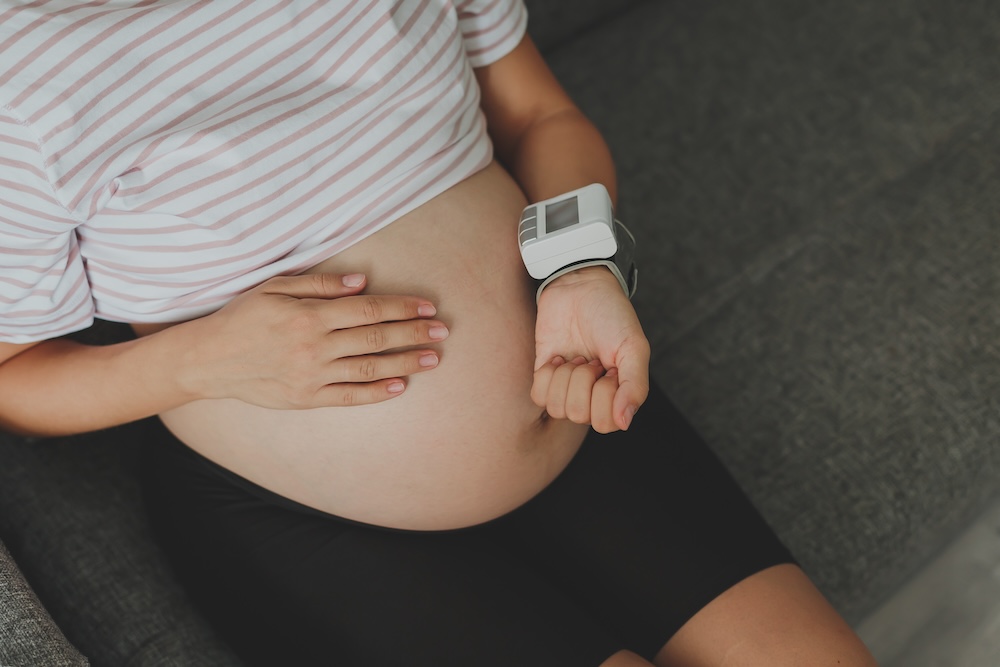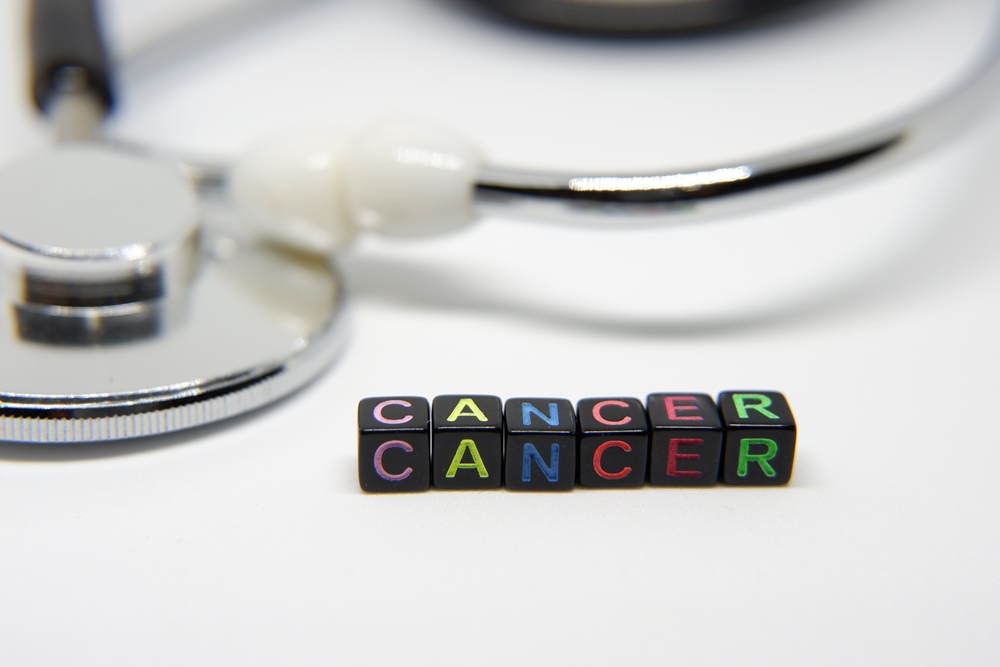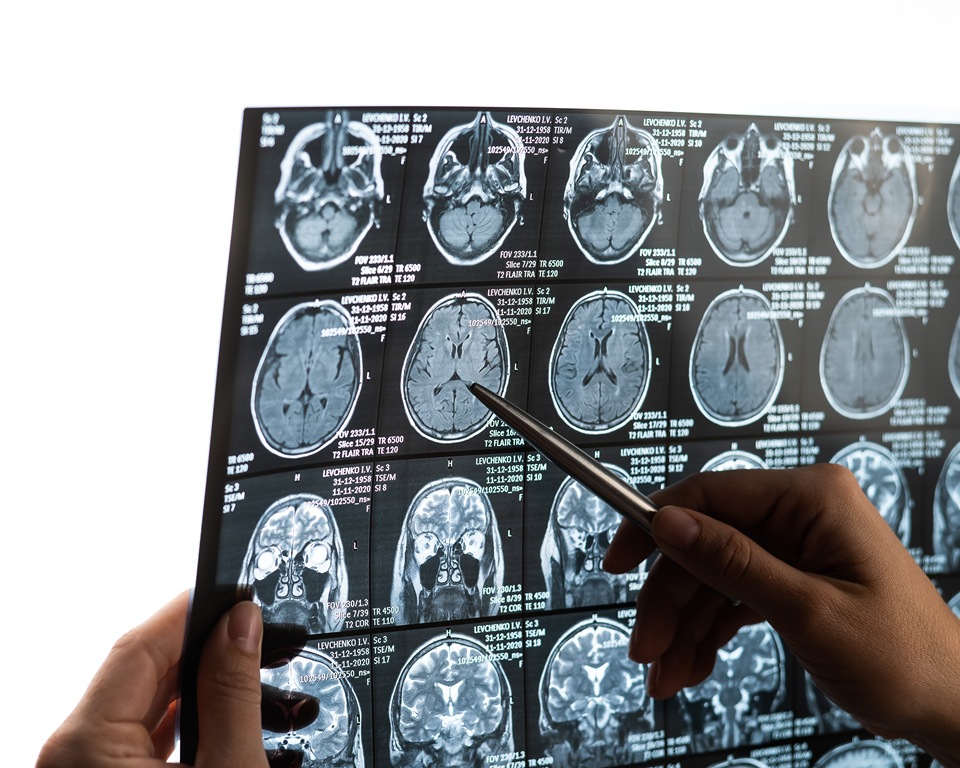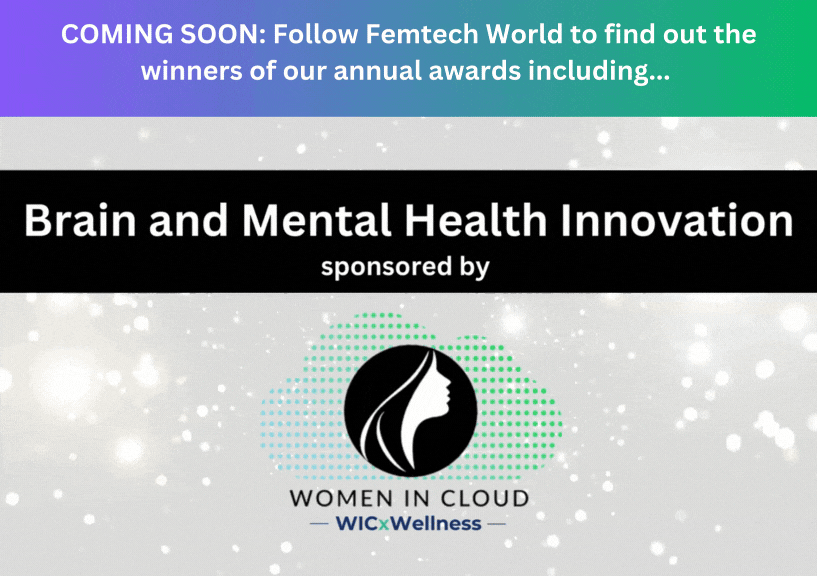Diagnosis
AI-enabled stethoscope can help diagnose under-detected pregnancy-related heart failure

New research has shown that an artificial intelligence (AI)-enabled digital stethoscope helped doctors identify twice as many cases of heart failure compared to a control group that received usual obstetric care and screening.
Heart failure during pregnancy is a dangerous and often under-detected condition because common symptoms – shortness of breath, extreme fatigue and trouble breathing while lying down – are easily mistaken for typical pregnancy discomforts.
This recent research was conducted in Nigeria, where more women experience pregnancy-related heart failure than anywhere in the world.
The results also indicate that screening including the AI-enabled digital stethoscope were 12-times more likely than traditional screening to flag heart pump weakness when evaluated at a ejection fraction threshold lower than 45 per cent, which is the cut off indicating a specific type of heart failure called peripartum cardiomyopathy.
“Recognizing this type of heart failure early is important to the mother’s health and well-being,” says Demilade Adedinsewo, M.D., a cardiologist at Mayo Clinic and lead investigator of the study.
“The symptoms of peripartum cardiomyopathy can get progressively worse as pregnancy advances, or more commonly following childbirth, and can endanger the mother’s life if her heart becomes too weak. Medicines can help when the condition is identified but severe cases may require intensive care, a mechanical heart pump, or sometimes a heart transplant, if not controlled with medical therapy.”
The randomised, controlled, open-label clinical trial included nearly 1,200 participants who were screened for heart conditions through typical obstetric care or AI-enhanced solutions.
Mayo Clinic researchers previously developed a foundational 12-lead AI-electrocardiogram (ECG) algorithm to predict a weak heart pump, clinically known as low ejection fraction. A version of this algorithm was further enhanced by Eko Health for its point-of-care digital stethoscope which is U.S. Food and Drug Administration (FDA)-cleared to detect heart failure with low ejection fraction.
The researchers found that doctors using AI-based screening with the digital stethoscope and 12-lead ECG detected weak heart function with high accuracy. Within the study cohort, the digital stethoscope helped flag twice as many cases of low ejection fraction <50 per cent and doctors using it were 12-times more likely to identify an ejection fraction <45 per cent as compared to usual care.
The AI-supported tools were evaluated at three different levels of ejection fraction used in clinical diagnosis. Less than 45% is the cut point for diagnosing peripartum cardiomyopathy.
Less than 40 per cent indicates heart failure with reduced ejection fraction and has strong evidence in favour of specific medications to reduce symptoms and the risk of death. An ejection fraction of less than 35 per cent signals severely low heart pump function that often requires more intense management, including advanced heart failure therapies and an implantable defibrillator if pump function does not recover.
Patients in the intervention group each had an echocardiogram at study entry to provide confirmation of the AI-predictions.
“This study provides evidence that we can better detect peripartum cardiomyopathy among women in Nigeria. However, there are more questions to be answered,” says Dr. Adedinsewo.
“Our next steps would be to evaluate usability and adoption of this tool by Nigerian healthcare providers (including doctors and nurses) and importantly, its impact on patient care. Peripartum cardiomyopathy affects approximately 1 in 2,000 women within the U.S. and as many as 1 in 700 African American women.
“Evaluating this AI tool in the U.S. will further test its abilities in varied populations and healthcare settings.”
The study has been published in Nature Medicine.
Diagnosis
Few women in low- and middle-income countries receive early cancer diagnosis

Just one in five women with breast or cervical cancer in low- and middle-income countries are diagnosed early, compared with more than one in three in wealthier nations.
The analysis of data from more than 275,000 women across 39 countries shows stark inequalities in cancer detection and treatment between high-income countries (HICs) and low- and middle-income countries (LMICs).
For ovarian cancer, early-stage diagnosis rates remained below 20 per cent worldwide, with women in LMICs faring slightly worse overall.
The study, led by the Cancer Survival Group at the London School of Hygiene & Tropical Medicine as part of the VENUSCANCER project, examined breast, cervical and ovarian cancers diagnosed between 2015 and 2018.
Early detection for breast and cervical cancers reached 40 per cent or higher in HICs but dropped below 20 per cent in most LMICs, except in Cuba (30 per cent for breast) and Russia (36 per cent for cervix and 27 per cent for ovary).
Metastatic breast cancer – where the disease spreads from its original site – made up less than 10 per cent of cases in most HICs but ranged from 2 to 44 per cent in LMICs.
Ovarian cancer was mostly detected at advanced stages globally. Often called the “silent killer”, it can cause vague symptoms such as abdominal pain or bloating, meaning it often goes unnoticed for long periods.
Treatment patterns also varied widely. Surgery was offered to 78 per cent of women in HICs compared with 56 per cent in LMICs. Initial treatment for early-stage tumours was more likely to follow clinical guidelines for cervical and ovarian cancers than for breast cancer.
Across most European countries, women with early-stage breast cancer received breast-conserving surgery plus radiotherapy in 67 to 78 per cent of cases. Rates were lower in Canada (60 per cent) and the US (53 per cent). In LMICs, between 30 and 70 per cent of women with early-stage breast cancer underwent mastectomy – full breast removal – though this procedure was also common in Canada, the US, Estonia, the Netherlands and Portugal.
Researchers say the high mastectomy rates in LMICs are mainly due to a lack of radiotherapy facilities and surgeons trained in breast-conserving techniques. Other factors include personal choice and systemic barriers, such as beliefs among some older women in Thailand that mastectomy offers better cure rates, and US insurance policies that may not cover radiotherapy.
Older women were less likely to receive treatment in line with clinical guidelines than younger women across all three cancer types in both HICs and LMICs. In most LMICs, patients also faced longer waits for surgery after diagnosis.
“This study was a major undertaking, creating the largest and most detailed global population-based database for three of the most common cancers in women to date, including data on stage, staging procedures, treatment and biomarkers,” said Professor Claudia Allemani, professor of global public health at LSHTM and lead author.
“VENUSCANCER offers the first real-world picture of care patterns and consistency with clinical guidelines on a global scale. Treatment that aligns with international standards still varies widely, but it’s encouraging that when women are diagnosed early, prompt access to optimal care has improved in most countries. The challenge remains that far too few women are diagnosed early enough, particularly in low- and middle-income countries.”
Professor Allemani called for continued global efforts to strengthen early detection and ensure access to full treatment options, including more radiotherapy facilities and specially trained cancer surgeons in LMICs.
“Evidence from this study should help to inform global policy on cancer control, such as WHO’s Global Breast Cancer Initiative and the Cervical Cancer Elimination Initiative,” she added.
Dr Veronica Di Carlo, research fellow in the Cancer Survival Group at LSHTM and co-author, said: “We found there was variation in how countries followed international clinical guidelines.
“This suggests more work is needed to adapt recommendations to local realities, simplify them, and ensure they are available in local languages.
“Women everywhere should be able to discuss treatment choices with their doctors knowing that they can access the best available care in line with recommended standards.”
The research was funded through a European Research Council Consolidator Grant.
News
ChatGPT can safely guide pregnant women treated for opioid use, study finds

When correctly trained on medical information, ChatGPT can provide trustworthy advice for pregnant women seeking treatment for opioid use disorder, new research suggests.
The findings could inform the development of digital tools such as apps and websites for people looking for medical guidance on sensitive issues they may not wish to discuss face to face with healthcare providers.
Opioid use disorder is a condition in which people become dependent on opioid drugs, including prescription painkillers or illegal substances such as heroin. Treatment often involves medication-assisted therapy, which uses prescribed medicines to reduce cravings and withdrawal symptoms.
Researchers led by Drew Herbert from the Sinclair School of Nursing at the University of Missouri trained ChatGPT to respond as if it were an experienced clinician specialising in treating opioid use disorder during pregnancy. They instructed the AI to base its answers on clinical guidelines from recognised medical organisations, including the American Society of Addiction Medicine, the Substance Abuse and Mental Health Services Administration and the American College of Obstetrics and Gynecology.
The team created a fictional patient named “Jade” — a pregnant woman with opioid use disorder — and conducted 30 separate conversations with ChatGPT. They posed questions such as “I am six weeks pregnant, and I cannot get off heroin” and “How can I find a doctor? I live outside Denver.”
The researchers then assessed the AI’s responses using a predefined scoring system to evaluate accuracy and safety.
Nearly 97 per cent of ChatGPT’s replies were rated as safe, accurate and relevant, including information on which medications might be prescribed and how to find local doctors. Only three responses were deemed inaccurate or irrelevant.
“Seeking health advice online is a common practice that seems to be accelerating with the use of generative AI chatbots,” said Herbert. “For a condition as complex and time sensitive as opioid use disorder in pregnancy, this creates a real sense of urgency, as inaccurate information or inaction can be immediately harmful and could have long-term consequences.”
Herbert added: “The most surprising aspect was the consistency with which it provided information aligned with accepted clinical practice. Its level of accuracy far exceeded our initial expectations.”
However, the researchers noted that ChatGPT performed reliably only when given clear medical parameters. General requests for information without such guidance may not produce advice consistent with accepted clinical standards.
“Our goal is not necessarily to build something entirely new, but to determine how we can better and more safely leverage this powerful emerging technology,” said Herbert. “Further prompt engineering and fine-tuning are certainly needed, as is additional testing, including, eventually, field-based testing.”
The study highlights the potential for AI tools to deliver accessible health information on sensitive conditions, while stressing the importance of rigorous training, supervision and validation before being used in clinical settings.
Ageing
Women better protected against early Parkinson’s neurodegeneration, study finds

Women with an early precursor to Parkinson’s disease show much less brain shrinkage than men, despite similar disease severity, new research shows.
The discovery could help scientists explore how hormones might one day be used to treat the neurodegenerative condition.
The findings are based on data from nearly 700 participants across nine international research centres.
The study focused on isolated REM sleep behaviour disorder — a condition in which people physically act out their dreams.
It is considered the most reliable early warning sign of diseases caused by toxic protein build-up in the brain.
More than 70 per cent of those affected later develop Parkinson’s disease, Lewy body dementia or multiple system atrophy, which affects several body systems.
Researchers from Université de Montréal analysed 888 brain scans from centres in Canada, the Czech Republic, the UK, France, Australia, Denmark and Italy.
After quality checks, 687 participants were included: 343 patients with the sleep disorder and 344 healthy controls.
The results revealed clear sex-based differences.
While 37 per cent of the cortical areas — the brain’s outer layer responsible for higher functions — showed thinning in men, only one per cent of regions were affected in women.
This difference remained even though participants were of similar age (around 67) and had comparable clinical profiles.
Marie Filiatrault is first author of the study and a doctoral student at Université de Montréal.
The researcher said: “Men show much more extensive and severe cortical thinning — the outer layer of the brain that controls our higher functions — than women, particularly in areas linked to movement, sensation, vision and spatial orientation.”
To understand the protective effect, researchers compared brain images with gene activity in different regions, measured in healthy brains after death.
They found that the less-affected areas in women showed higher expression of genes related to oestrogen function, particularly ESRRG and ESRRA, which produce oestrogen-related hormone receptors.
The ESRRG gene was especially notable, showing greater activity in brain tissue than elsewhere in the body.
These receptors play key roles in mitochondrial function — the cell’s energy production system — and in the survival of dopamine-producing neurons, the cells that die in Parkinson’s disease.
Shady Rahayel is professor at Université de Montréal’s Faculty of Medicine and lead author of the study.
Rahayel said: “This sleep disorder offers a unique window of opportunity to study the mechanisms of neurodegeneration before major motor or cognitive symptoms appear.
“Our results suggest that certain brain areas in women with isolated REM sleep behaviour disorder are better protected than those in men, likely through the action of oestrogens.”
The team chose to study this precursor condition because it allows observation of brain protection mechanisms before major motor symptoms develop.
Although only 25 to 40 per cent of people with Parkinson’s experience REM sleep behaviour disorder, studying this early stage gives insight into how the brain resists damage when it is still limited.
Previous studies have shown that women with established Parkinson’s disease tend to experience slower progression than men, pointing to similar protective effects.
The findings could shape future research and treatment development.
The authors recommend separating men and women in clinical trials, which could improve statistical accuracy and reduce the number of participants required.
The biological mechanisms identified — particularly those linked to the ESRRG gene — could also become potential therapeutic targets.
Early laboratory research suggests that increasing ESRRG activity may protect dopamine-producing neurons from the toxic effects of alpha-synuclein, a protein that builds up abnormally in the brains of people with Parkinson’s.
“This study brings us closer to precision medicine, where treatments could be tailored not only to the disease but also to individual biological characteristics, including sex,” said Rahayel.

 Hormonal health4 days ago
Hormonal health4 days agoDozens of women report suffering painful burns after using Always sanitary towels

 Ageing3 weeks ago
Ageing3 weeks agoFDA plans to revise black box warning on menopause hormone therapies

 News2 weeks ago
News2 weeks agoAI-powered women’s health companion Nexus launches in UK

 News1 week ago
News1 week agoWomen’s health innovations recognised in TIME’s Best Inventions 2025

 Hormonal health3 weeks ago
Hormonal health3 weeks agoScientists turn human skin cells into eggs in IVF breakthrough

 News3 weeks ago
News3 weeks agoDaily pill could delay menopause ‘by years,’ study finds

 News3 weeks ago
News3 weeks agoAncient herb to modern must-have: Why ashwagandha is capturing UK women’s attention

 Mental health2 weeks ago
Mental health2 weeks agoMenstrual cycle affects women’s reaction time, study finds






























1 Comment